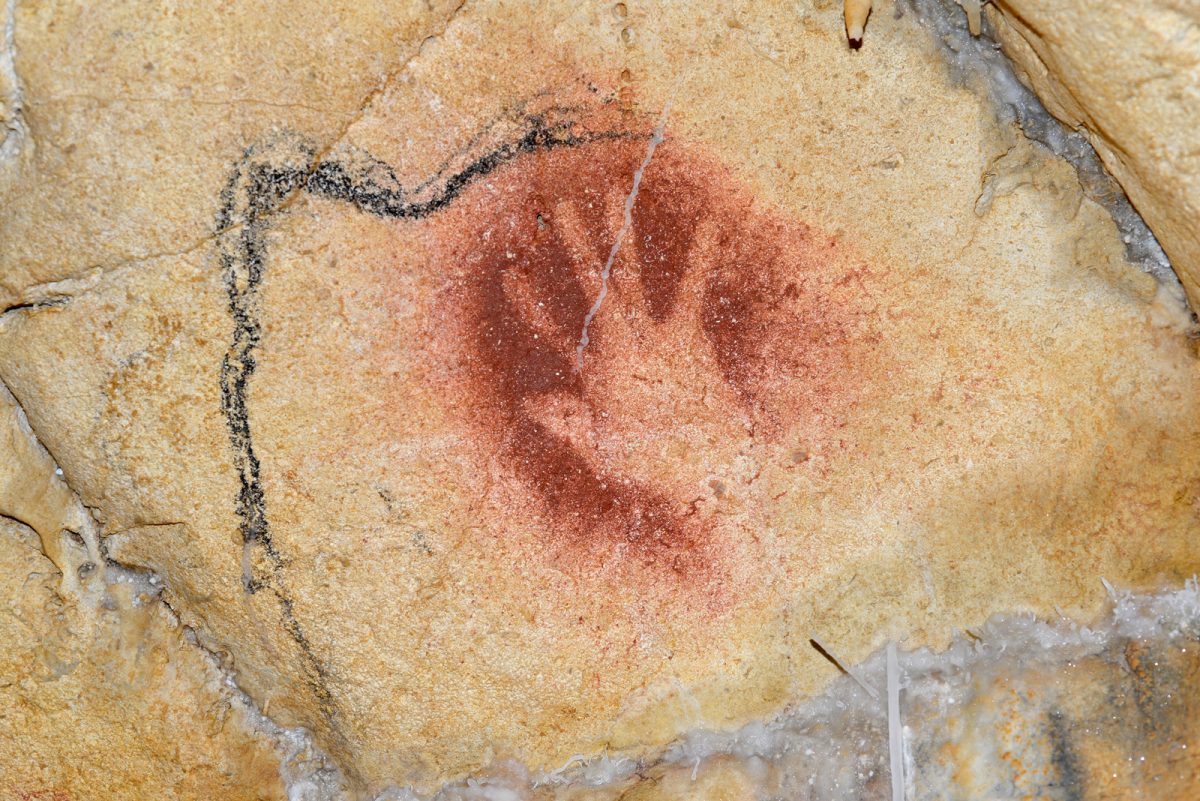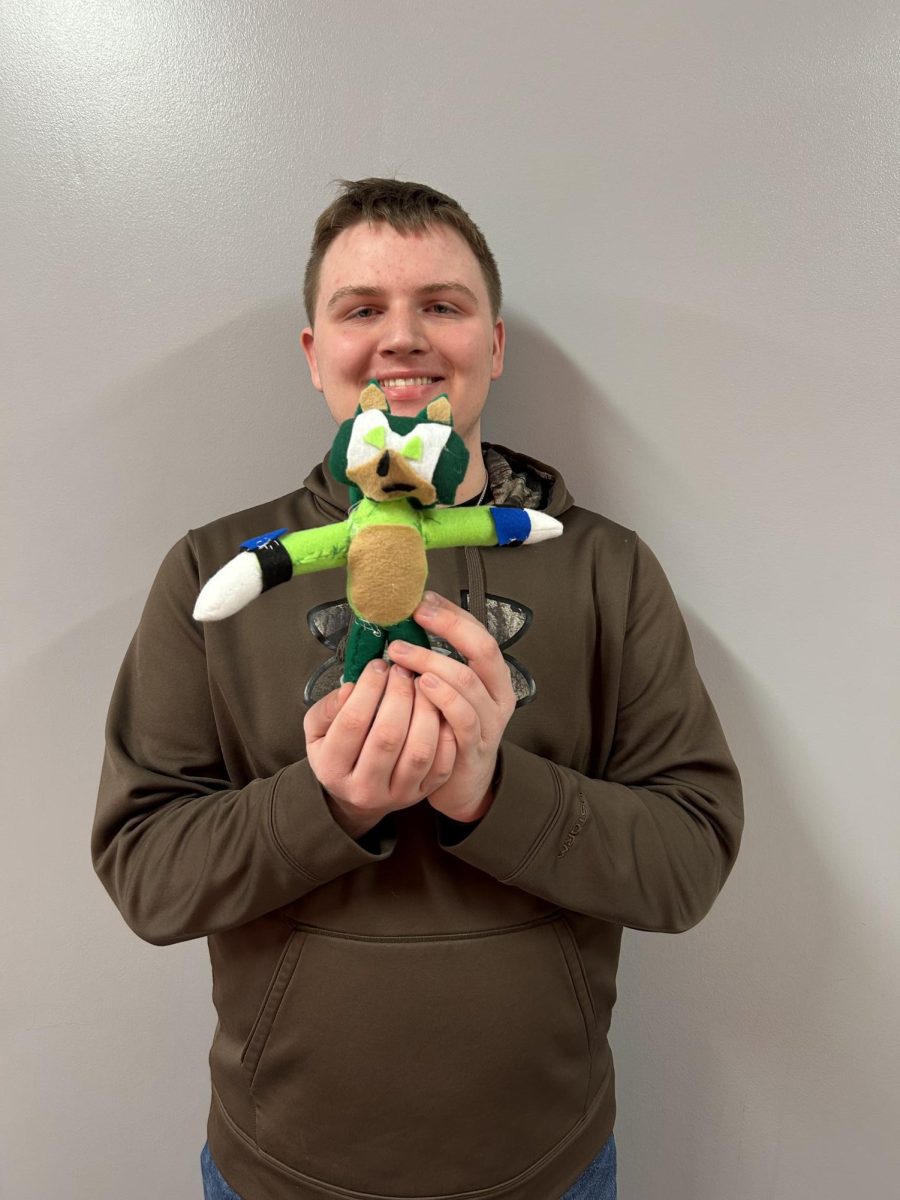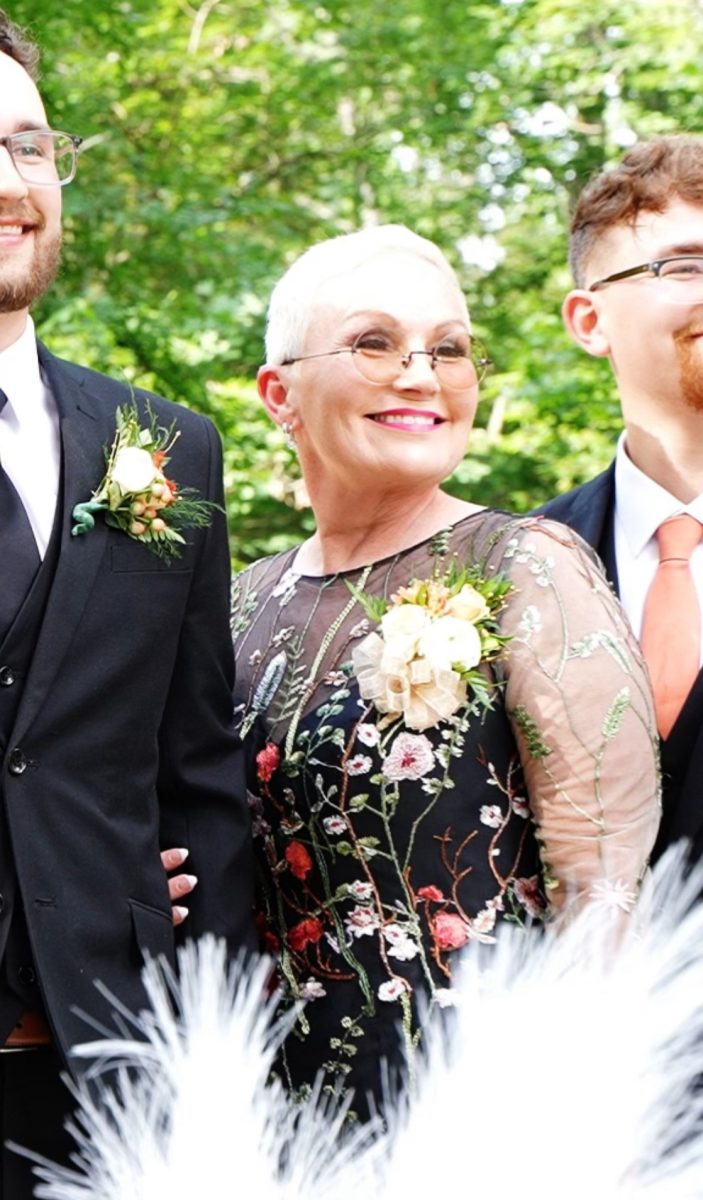
Hey Pirates! Today I’ll be talking about a technocomplex from the Upper Paleolithic, the Gravettians. Why is this important you might ask, well, I’ll tell you why! Not only is understanding our species’ history important for understanding just how marvelous our modern day technology is, but it’s also very interesting and new knowledge is always a good thing to come by. I will discuss 1.) Who these people were, 2.) The things that make them unique genetically, 3.) What they subsided off of, and 4.) And what their tools and art were like.
Gravettians were people from the Upper Paleolithic who lived and were the predominant culture across Europe around ∼33,000–22,000 years ago. They came after the Aurignacians and almost completely replaced them. The Aurignacian lasted from approximately 43,000 to 26,000 years ago. While the Gravettians would eventually succeed the Aurignacians, they coexisted for a period of time. The Gravettians got their name from the La Gravette site in Dordogne, southwestern France, whereas the Aurignacian’s name comes from the Cave of Aurignac in Haute-Garonne, southwestern France. Gravettian is the word for the technocomplex or industry of the time, which means that it was a distinct culture that used certain technology, archaeologically speaking it is a typological classification of stone tools. The Gravettian itself was defined by being an industry using small pointed blades for hunting large game. The big game being hunted in this case being bison, horse, reindeer, and mammoths.
From 33,000BC and forward the Aurignacian population would dwindle and be replaced by the Gravettians. Gravettian culture is slowly forming and rising during this time period. Researchers have not come to a consensus on where it originated exactly, but a common explanation is that the origin was monocentric, starting in the Middle Danube basin. This is backed up by radiocarbon dates showing that the earliest Pavlovian culture evolved from proto-Aurignacian technology. Pavlonians were a variant of the Gravettian categorized by its use of sophisticated stone age tech which was needed to survive in the harsh climate they lived in. These people would’ve hunted large game like Mammoth herds for the meat, fat, hides, and bones along the tundra at the edges of the ice sheets in central europe. After this culture arose in the Danube Basin, it would’ve spread to the Moravian Basin, and modern day Poland, Slovakia, and Hungary. Later these people would’ve moved further west and east, going west they would have settled in France, and going east they would have gone into the eastern river basins near the Black Sea and into the Russian plains. At the same time people were moving into the Russian plains, they were also moving into Iberian Levante, or the Iberian eastern Mediterranean coastline.
However, this is only one explanation for the widespread nature of the Gravettian culture across Europe. There is another theory that is polycentric, claiming that the various centers of Gravettian culture evolved on their own, stemming from earlier local cultures and traditions. This however is a little bit too much info to fit into this article, but if you would like to know more there is a plentiful amount of information on the internet over this exact subject. If you find this interesting please search for more knowledge on it! I am human just like you, so who knows, you might stumble upon some information that refutes older hypotheses and claims that I have sourced in this article. Whatever it is you may find will not only expand upon your knowledge of this subject, but it also might introduce you to more things which you might have never discovered unless you had done your research.
Despite the things they shared culturally and technologically, the Gravettians were not a homogeneous group genetically, even though they were culturally similar, albeit not identical, across Europe. The things that bind this technocomplex together are the tools and weapons used and the portable art created bearing similar themes. Genetically the Gravettians from west and southwest Europe, which would be France and Iberia today, are genetically distinct from those who lived in the central regions and south, which would be the Czech Republic and Italy today. The descendants of these western Gravettians would remain genetically tied to them, their descendants were the people who lived in southwest europe during the peak of the Last Glacial Maximum [26,000 to 20,000]. These people sought refuge in Iberia and France, which back then was very cold and dry, but still more hospitable than a majority of Europe was at the time. One might think that the Italian peninsula would’ve been a place that these descendants would’ve gone to in search of game and a better climate, but the populations living there at the time had no genetically detectable ties to the people who lived in Central and Southern Europe. In fact, these populations from the central and southern regions disappear after the LGM. Researcher He Yu, who has studied Archaeogenetics and teaches at Peking University says, “We find that individuals associated with a later culture, the Epigravettian, are genetically distinct from the area‘s previous inhabitants,” “[…]Presumably, these people came from the Balkans, arrived first in northern Italy around the time of the glacial maximum and spread all the way south to Sicily.” The research being done on the genetics of the Gravettian people sheds light on a period of our history that for much of our existence, we’ve had little to no substantial knowledge of. Working with the genes, we can discover new things, discard old hypotheses that are no longer applicable, and learn more about the humans who lived and died all those thousands of years ago.
What features did the Gravettian people’s unique genes produce, you might ask, well, these genes meant that the men of the Gravettian were very unique themselves. These men were the tallest on average group of people to ever live, their high protein diets along with the relatively small gene pool led to the production of very tall men on average. Remains suggest that Gravettian men were on average 5’10-6’2, quite a tall height for the mean number of the population. Gravettian women on the other hand were 5’2 on average. Even today in the areas where these people lived and died thousands upon thousands of years ago, the people of those regions are still some of the tallest on average. Bosnia and Herzegovina, The Netherlands, Croatia, and Montenegro are the modern day regions where these people once lived, and on average they are the tallest people in the world.
Why were these people so tall? Well I’ll let scholar and author Pavel Grasgruber tell you. “I suspect that this big game specialization associated with a surplus of high-quality proteins and low population density created environmental conditions leading to the selection of exceptionally tall males.” Grausgruber said in an interview with Seeker media. Honestly it is not very surprising that the people who hunted and ate predominantly large game rich in proteins would see a change physiologically over the time that they spent adapted to this lifestyle. It is not unseen for genes to mutate and change over time as humans live and adapt to the climates and situations they belong to.
Coming from that topic, one might wonder what exactly it was that these ancient people subsided off of. When you think of the Last Glacial Maximum you might think of mammoth hunters stalking their prey across the icy tundra of Siberia, and you wouldn’t be incorrect! Many ice age europeans, north americans, and asians lived nomadically following Mammoth herds for the plentiful resources they provided, however, this was not the only lifestyle that ice age people took on. Surprisingly those in Iberia did not eat predominantly fish, instead the diets of most Late Gravettian humans consisted of plants and animals like rabbits, deer, and horses. This was determined by an isotope study done on human fossils from the Serinyà caves in Catalonia. Surprisingly, the amino acid isotopes from the remains in the Serinyà caves showed no signs of consuming fish despite being on the coast. Even during the coldest period of the ice age, the land was more fruitful than the sea for some populations. These anecdotes on diet are not applicable to everyone in the Gravettian though, they were hunter-gatherers, they ate what they could find in their local area. In central Europe this was mammoths, in Britain it was horses and reindeer, and seafood along the coastlines in what is now France and Italy. Research suggests that they specifically targeted reindeer in the early fall, attacking sedentary herds rather than following the migrating herds over long distances. People from the Late Gravettian era [~27,000] would travel to the foothills of Bohemia [modern day Czechia] to find plentiful amounts of reindeer from which they would take the valuable resources of meat, bone, antlers, fat, and hides to prepare for the oncoming winter.
The most famous example of what these ice age people ate are the aforementioned woolly mammoths. The woolly mammoth is actually one of my favorite extinct organisms [right behind Charnia Masoni and the Radiodonts of course], so here is a little breakdown of: What were wooly mammoths? How were their resources used by paleolithic hunter gatherers? Why did they go extinct?
The woolly mammoths were a species of mammoth, which were an extinct genus of elephants known as Mammuthus, and resided in the tundras of Asia, Europe, and North America. They lived from around 300,000 years ago [the Middle Chibanian] to around 10,000 years ago. The woolly mammoth had a thick coat of fur to protect it from the harsh cold of its habitat, it was made up of long guard hairs and a shorter undercoat similar to many animals adapted to the cold. Not only did it have fur to protect it, but they also had large amounts of fat to keep in body heat. Unlike its relatives the elephants who use their massive ears to cool themselves off, the woolly mammoth developed small ears to minimize how much body heat they lose and to keep from getting frostbite. They had large bones and long tusks which Gravettian people used for many purposes. The bones were used in making harpoons, awls [small tools for punching holes in leather or canvas to make clothing, but can also be used in woodworking to mark locations for cutting], needles and many other tools like blades and scrapers. The tusks were exceptionally desirable though, they were durable and were used in making many objects like adornments, statues, figurines, and other art, weapons and other tools, but also construction materials. The tusks could be used in making structures, if you’ve read any of the Earth’s Children books you probably know about this!
Mammoths were extremely important to these populations, their fatty and nutrient rich meat was a staple in many people’s diets back then. Much like how Inuit people and other natives from far up north eat a diet high in omega 3 fatty acids, the Gravettians did as well. You might think that a diet with such high amounts of fat would lead to health problems, however, over time humans have adapted to this lifestyle. Here is a quote from Dr Pascale Gerbault, who researched and co authored a study on Inuit people’s genomes and how their diet is metabolized by their body. “[…]These findings give us important clues about how our diet and the way we metabolise our food has affected and probably still affects our evolution. It suggests that our bodies differ in how they physically respond to diets depending on our genome, so what might be healthy for one person, isn’t the case for another.” So there is a good chance that perhaps these Gravettian people had this genome as well, over the thousands of years subsiding off of diets high in fat, perhaps it led to an evolution in how they metabolize their food. The data shows that nearly 100% of Inuits carry this gene, while only 2 percent of Europeans,and 15 percent of Han Chinese do, this means that a majority of people synthesize their omega 3 polyunsaturated fatty acids differently from how the Inuit do.
Hunting mammoths was integral to many Gravettian communities, it provided them with a steady source of food, clothing, tools, and shelter all from one animal. The numerous cave paintings depicting these organisms may give us a hint at how important it really was for these people. Perhaps they painted so many woolly mammoths because there was a religious aspect to it, it would not be surprising to me if they revered the mammoth since it provided them with so many resources necessary for survival in the harsh world of the last glacial maximum. They also made other art of the woolly mammoths, one of them being a tiny sculpture only 2.1 cm tall, it was sculpted from clay and baked, and perhaps its sloped back represents a juvenile mammoth which might have some religious significance.
You know how I said they went extinct 10,000 years ago? Well, that’s not entirely correct. The last known group of woolly mammoths actually lived until about 1650 BC on a Russian island known as Wrangel Island. That means that woolly mammoths lived up to a thousand years after the pyramids of Giza were constructed! Unfortunately, the mammoths were adapted for a different world than was about to come around after the ice age, and their adaptations would not be helpful for their survival once the planet started to warm up again. Hunting by humans probably accelerated their demise as well, and sadly the species would go extinct.
The people of the Gravettian era used many tools to survive in their harsh and unforgiving world that was the LGM. The most commonly used tools in hunting were sharpened stones, clubs, and pointed sticks. Sharpened bone and antler have also been found at gravettian sites. Small pointed blades with straight and blunt backs, called Gravette points, were used by the Gravettians to hunt large game. Gravettians commonly hunted migrating animals, specifically preying upon them when they were located in valleys, like the reindeer mentioned earlier.
The Gravettians used every part of an animal that they could, remains and artifacts at the Pavlov I site in south Moravia include arctic fox teeth used for decoration, whereas the bones were instead used for making tools. There are also artifacts of red fox teeth as decoration, and their ulnas and other small bones being used for tools like awls or fish hooks. The awls were used for punching holes in leather to make clothing, accessories, or any other thing made from leather. Horse bones like ribs, fibulas, and metapodia were also good for making leatherworking tools and fish hooks as well. The bones are strong, but still easy enough to carve and one bone from a large animal can be used to make multiple tools if it’s big enough. The gravettian people were certainly not wasteful, anyone living in the extreme climate they did would be that frugal with their resources too.
Recent studies have proposed that there might have been 9 distinct cultures in Europe during the Gravettian period. The researchers behind this study looked at personal adornments worn by people who lived from 24 to 34 thousand years ago. Such a long amount of time has passed since then and it’s difficult to visualize, and seeing what their accessories looked like back then only has me in awe at how far the human species has come in our [relatively short] time on this planet. Just like how nowadays you might put on a cute hat to tie an outfit together, or put on a necklace or bracelet as an adornment, people have been doing the same thing for thousands of years! Shell headdresses can be seen in art and statuettes and it is assumed that they were worn by many people of this time period.
Back then these hunter-gatherer populations dressed in animal skins, with adornments attached to their clothing, limbs, or skin. They used what they had access to, like animal teeth, amber, bones, rocks, wood, and shells, the last of which were used in a common head covering worn by these paleolithic people. These accessories were either worn as they are or carved and designed, some were drilled through and attached with thread to their clothing. When you think of cave dwelling people, or just people from prehistoric times in general, you probably think of barefoot people wearing loose animal skins with long ratty hair, and while there were most definitely some people who lived and dressed like that, many complex articles of clothing were commonly made and worn. Imprints of textiles have been found in caves as well as evidence of footwear. That’s not all, in the buried remains of some individuals in a Russian site there are beads around the feet of some of the people. This could be what’s left from long rotted shoes that were one intricately decorated with beads.
When it comes to art, the Gravettians are perhaps most well known for their ‘venus figurines,’ small statuettes that were meant to be portable and easy to carry around. Scientists have not come to an absolute truth at what these figurines were used for. Many suppose that they were a religious item or an object to worship for a goddess or religion they believed in. Due to many of the statues’ emphasis on female specific features like prominent breasts and hips it is proposed that these might be offerings for a fertility goddess, or perhaps the making of one of these figurines was a religious experience. Another theory is that the Gravettian men made these statues of their wives and since they were portable they could be carried with them on long hunts or during times of war. The exaggeration of the body parts could be the statue maker shaping the statue with all of the most desirable parts emphasized to show his wife’s beauty. It would make sense that in these times that being overweight would have been very desirable and a show that one can take care of oneself and has the means to support not only them, but also a family. In a sense the word wife might be a little misleading as we do not know if relationships among Gravettian people were defined by things like this as they are in modern society. I would not find it strange at all if the Gravettians lived in a completely different societal structure because they lived in an entirely different world from us with different needs. Regardless, another theory could be that women carved them of themselves as a religious offering, or that they made them as gifts for those they loved to carry with them, like how you might carry a photo of your daughter, mother, or wife, in your wallet. What is peculiar is that almost always these figurines lack any facial features, though this could just be from time and weathering, like how most of these figurines’ limbs are broken off.
While these people lived thousands and thousands of years ago, we can still find things about them that we can relate to ourselves. Whether that be accessorizing with jewelry, making art of what we see in our lives, or simply surviving in a world that seems to be fighting against us. Regardless of who you are, where you come from, or what you like, anyone can understand the importance of understanding our species’ past to understand not only the present, but the future. Despite global unrest, climate change, and widespread conflict, we have always persevered. We have survived this long, we have remained strong, and we will continue to thrive so long as we remember the fundamental truths about human existence. Life is fleeting, everyone bleeds red, and the human species shall prevail as long as we support one another and don’t let ourselves succumb to the tempting nature of greed and wrath. I believe humans are inherently inclined towards goodness, and the way we have survived this long is because we are capable of great altruism, despite the fact that we are equally capable of great evil. Keep these things in mind, keep pursuing knowledge, and remember to respect and love those who support you. Thank you so much for reading, go Pirates!






















